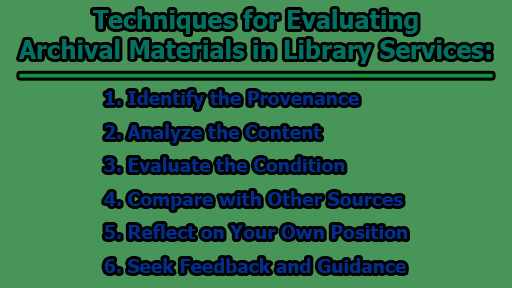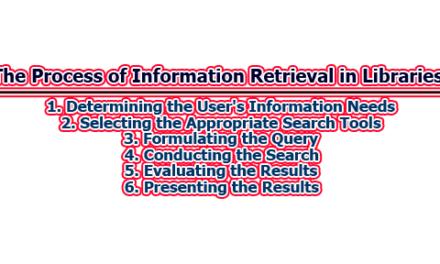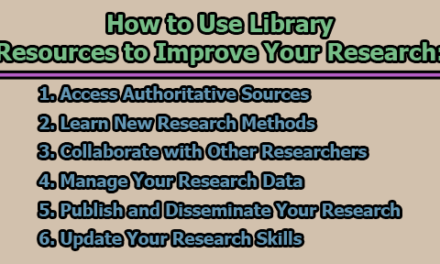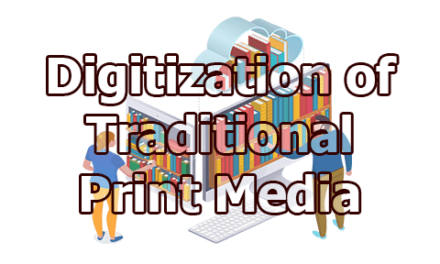Techniques for Evaluating Archival Materials in Library Services:
Evaluating archival materials in library services is a crucial aspect of ensuring that these historical or cultural artifacts are reliable, authentic, and relevant for researchers, students, and the general public. Archival materials, which encompass a wide range of records, documents, and artifacts, provide a unique glimpse into the past, but their evaluation requires a comprehensive approach. In this article, we will explore some of the necessary techniques for evaluating archival materials in library services.
1. Identify the Provenance: The provenance of an archival material refers to its origin, history, and ownership, which can shed light on its context, purpose, and significance. To uncover the provenance of a material, researchers should delve into details such as the creator, date, place, format, and the collection it belongs to. These attributes can be cross-referenced with other sources to authenticate its background. Additionally, finding aids, catalogs, and guides that describe the archival collection’s arrangement can help in understanding where the item fits in the overall scope of the collection.
2. Analyze the Content: Understanding the content of an archival material is crucial for assessing its reliability and perspective. Researchers should pose critical questions about the who, what, when, where, why, and how of the material. Examining the tone, language, style, and arguments presented in the item can provide insights into potential bias or accuracy. Furthermore, considering the intended audience, genre, medium, and function of the material aids in interpreting its representation within its historical or cultural context.
3. Evaluate the Condition: The physical condition of archival materials is paramount to their accessibility, usability, and preservation. Researchers should carefully inspect the size, shape, color, texture, and material of the item. Any signs of damage, deterioration, or alteration should be noted, as these can impact the material’s durability and authenticity. It is important to adhere to the specific rules and guidelines of the archival institution for handling, storing, and reproducing the material, while respecting its fragility and uniqueness.
4. Compare with Other Sources: Comparing archival materials with other sources is a fundamental technique for verifying and corroborating information. Researchers should seek out similarities and differences in content, format, and context between items. This comparison can help to either support or challenge the narrative presented in the material. Utilizing a mix of primary and secondary sources, such as books, articles, databases, or websites, can complement and enrich the research by providing alternative viewpoints and corroborative evidence.
5. Reflect on Your Own Position: Self-awareness is a vital element of evaluating archival materials. Researchers should acknowledge their own assumptions, values, and interests that may influence their evaluation. Being aware of one’s background, perspective, and purpose for using the materials helps to make informed choices and ask pertinent questions. It is essential to remain open to different viewpoints and experiences, as these can both enrich and challenge the understanding of the archival materials.
6. Seek Feedback and Guidance: Seeking feedback and guidance is a proactive approach to enhancing one’s evaluation skills. Librarians, archivists, curators, and other experts can offer valuable insights and assistance in locating, accessing, and using archival materials. Collaboration with other researchers, students, or peers can provide diverse opinions and suggestions that contribute to a well-rounded evaluation.
In conclusion, evaluating archival materials in library services is a multi-faceted process that encompasses aspects of historical, contextual, and physical analysis. By identifying provenance, analyzing content, evaluating conditions, comparing with other sources, reflecting on one’s position, and seeking feedback and guidance, researchers can ensure the authenticity, reliability, and relevance of these valuable resources. As guardians of our cultural and historical heritage, the meticulous evaluation of archival materials is of paramount importance.

Assistant Teacher at Zinzira Pir Mohammad Pilot School and College










